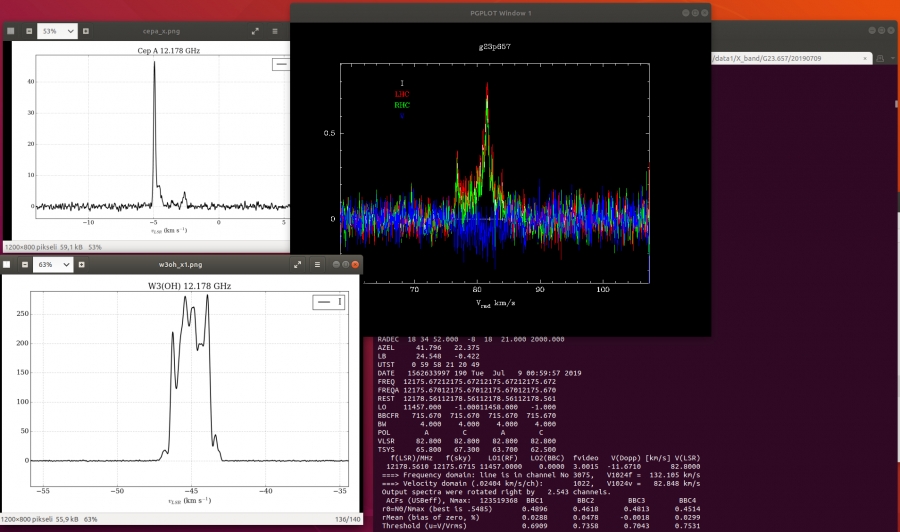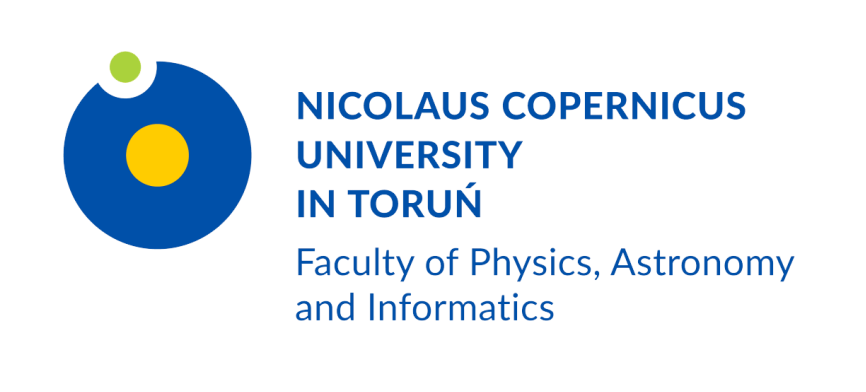
The 25th anniversary of inauguration of the 32-metre radio telescope of Nicolaus Copernicus University Centre for Astronomy in Piwnice near Toruń will be celebrated in October 2019. During that quarter-century, this remarkable instrument - the largest of this kind in Poland - made a number of discoveries. Owing to installation of a system for receiving radio waves in the frequency range from 8 to 16 GHz (X-band), new possibilities to explore the Universe open up for the telescope now. So far, successful initial test observations using the new system have been performed.
Radio waves from Cosmos are extremely faint compared to those emitted for communication purposes hence they induce very weak signal in the receiving system. To protect the signal from being swamped in the noise of the system itself, it must be cooled down to the temperatures of the order of 30 K. Therefore, some components must fulfil the requirements of functioning in such low temperatures. They were ordered and manufactured in China and Spain, whereas the whole receiving system was designed and assembled by the engineering staff of Radio Astronomy Department of the NCU Centre for Astronomy led by Eugeniusz Pazderski.
Scientific research using the new system will be predominantly based on the observations of methanol maser line at 12.2 GHz. That emission takes place in the areas of birth of massive stars. Given the nature of their evolution, newborn stars are not visible through the optical telescopes for initial few million years hence the investigations carried out in radio and infrared domains are the best source of information about them.
Cosmic masers of clouds of gas enshrouding some type of stars emit radio waves in a manner similar to that of lasers emitting light. In both cases, the frequencies of the emitted waves are precisely determined thus they are so-called spectral lines. For decades, the 32-metre radio telescope has been used for observations of maser lines and the Toruń team is well known for carrying out observations of regions where methanol lines at 6.7 GHz are generated. (Szymczak et al. 2000, 2002, 2018). The most spectacular accomplishment in the area of investigations of maser lines carried out at NCU Centre for Astronomy is the discovery of regularly pulsating objects. Out of 25 such objects known to date, as many as 10 have been discovered owing to the observations with the 32-metre radio telescope. Moreover, the discovery of the only one known object, where alternate variability of methanol and water vapour masers takes place is the result of a systematic monitoring of the objects in the Galaxy with our radio telescope (Szymczak et al. 2016).
Apart from spectral investigations, participation in observations within the European Very Long Baseline Interferometry Network (EVN) will be possible owing to the new receiving system. The system for 8-16 GHz band was the only one missing so far at the 32-metre radio telescope yet being used by the EVN. From now on, Toruń radio telescope will be able to take part in all EVN observations. Participation in the European Space Agency project JUICE (JUpiter ICy moons Explorer) is also planned. That mission is aimed at performing detailed observations of gaseous giant planet Jupiter and its three largest moons: Ganymede, Callisto, and Europa. The task of our radio telescope working together with other EVN telescopes participating in the PRIDE-JUICE (The Planetary Radio Interferometry and Doppler Experiment) will be precise tracking of the JUICE probe trajectory during its encounters with Jupiter's moons. Based on the measurements of the gravitational influence of Europa or Ganymede on JUICE orbit, it will be possible either to confirm or reject a theory positing the existence of huge water oceans under the icy surfaces of those moons.
Putting the receiving system at 8-16 GHz frequency band at the 32-metre tadio telescope of NCU Centre for Astronomy into service was partly supported by the NCN OPUS grant "Investigations of the environment around massive young stars" (2016/21/B/ST9/01455) managed by Dr. hab. Anna Bartkiewicz. The main contributors are Prof. Dr. hab. Marian Szymczak, Dr. Paweł Wolak, MSc Mateusz Olech, MSc Rafał Sarniak, and MSc Michał Durjasz.

 Grudziądzka 5, 87-100 Toruń
Grudziądzka 5, 87-100 Toruń![[photo:Dr. Paweł Wolak] Click to zoom the picture.](http://www.umk.pl/wiadomosci/serwisy_wp/gallery/1313/thumbnail/RT-4_20190709.jpg)
![Dewar's dish [photo:Dr. Paweł Wolak] Click to zoom the picture.](http://www.umk.pl/wiadomosci/serwisy_wp/gallery/1313/thumbnail/20180423_115022.jpg)
![OMT - OrthoMode Transducer [photo:Dr. Paweł Wolak] Click to zoom the picture.](http://www.umk.pl/wiadomosci/serwisy_wp/gallery/1313/thumbnail/20180423_omt.jpg)
![Receivers at the 32 m Torun dish, from left: X-band, C2-band and C1-band receivers. [photo:Dr. Paweł Wolak] Click to zoom the picture.](http://www.umk.pl/wiadomosci/serwisy_wp/gallery/1313/thumbnail/20190701_140927.jpg)
![Feed assembly, Jacek Król. [photo:Dr. Paweł Wolak] Click to zoom the picture.](http://www.umk.pl/wiadomosci/serwisy_wp/gallery/1313/thumbnail/20190701_140651rot.jpg)
![First light! - 12.2 GHz methanol masers in high-mass star-forming regions. [photo:Dr. Paweł Wolak] Click to zoom the picture.](http://www.umk.pl/wiadomosci/serwisy_wp/gallery/1313/thumbnail/widma.jpg)